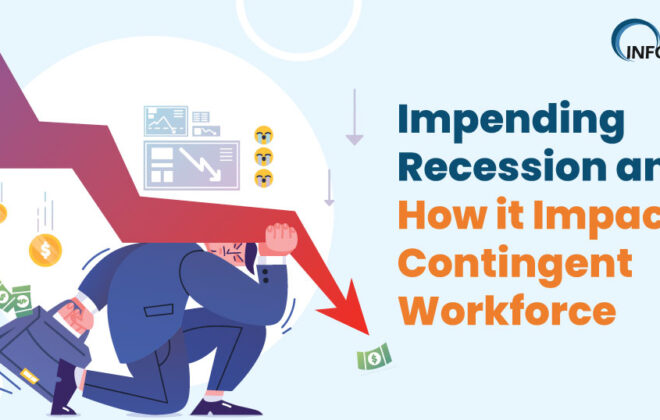Analyzing Employee Turnover: Causes and Strategies
Employee turnover is something almost every company deals with at some point, and it can be a real headache. When people leave, it disrupts the workflow, lowers morale, and can cost a lot of money to hire and train new staff. According to the U.S. Bureau of Labor Statistics, the average turnover rate across industries in the U.S. was 57.3% in 2022. That’s a big number! If you’re an HR professional, manager, or business leader, you’re probably looking for ways to understand why people are leaving and, more importantly, what you can do to keep them around. This blog breaks it down for you.
Why Do Employees Leave?
There’s no single reason why employees quit, but common themes often emerge across industries. Most departures stem from a lack of growth opportunities, inadequate compensation, work-life imbalances, toxic environments, or poor management. Let’s break down these key drivers in more detail:
- No Room for Growth: People want to move up in their careers. In fact, 87% of Millennials say career development is important, according to Gallup, but only 39% think their current jobs give them a chance to grow. When people feel stuck, they start looking for better options.
- Low Pay: Money matters. In a survey from Payscale in 2023, 47% of employees who quit said it was because they weren’t paid enough. If folks think they can earn more somewhere else, they won’t hesitate to move on.
- Poor Work-Life Balance: Burnout is real. A 2023 Deloitte report found that 77% of employees had experienced burnout, and 91% said too much stress made their work suffer. When people feel like their job is taking over their life, they’re more likely to leave.
- Toxic Work Environment: Nobody wants to work in a negative or toxic environment. A study by MIT Sloan in 2022 showed that people are 10.4 times more likely to leave because of a toxic work culture than any other reason, even pay.
- Lack of Recognition: Everyone likes to feel appreciated, and when that doesn’t happen, employees check out. In 2022, 79% of people who quit said they didn’t feel valued at work, according to Workhuman. If they don’t feel appreciated, they’ll leave.
- Bad Management: A lot of times, people don’t leave their jobs—they leave their managers. Gallup’s 2022 report showed that 50% of employees quit because of bad bosses. Poor communication, lack of support, and mismanagement can drive people away fast.
Explore Our Global Talent Research and Staffing Services
How to Keep Employees from Leaving
Now that we’ve talked about why people leave, let’s dive into some easy ways to keep your team happy and reduce turnover. Here are some solid strategies:
- Create Career Development Opportunities: People want to feel like they’re growing. According to a LinkedIn report from 2023, 94% of employees said they’d stick around longer if their company invested in their development. Offering promotions, mentorship programs, or even new challenges can make a big difference.
- Pay Competitive Salaries: This one’s straightforward—pay your employees what they deserve. A 2023 Mercer report found that companies with competitive pay saw a 30% drop in voluntary turnover. It’s a good idea to regularly check salaries to make sure you’re in line with what others are offering.
- Encourage Work-Life Balance: Employees really appreciate flexibility. Whether it’s letting them work from home or offering flexible hours, companies that do this usually see lower turnover. A study by Ernst & Young in 2023 found that 54% of employees would consider quitting if they didn’t get some flexibility in their schedules.
- Build a Positive Work Culture: A healthy work environment is key to keeping people around. CultureIQ’s research shows that companies with a strong, positive culture have 72% less turnover. Regularly acknowledge good work and handle conflicts quickly to maintain a positive vibe in the office.
- Recognize Employee Contributions: Showing appreciation to your team isn’t just a nice thing to do—it helps keep them around. Gallup found that companies with strong recognition programs have 31% lower turnover rates. A simple thank-you or a small reward can really make a difference.
- Train Managers to Be Better Leaders: A good manager can really shape an employee’s experience. According to DDI’s leadership forecast, 57% of employees would quit because of a bad boss. It’s crucial to make sure your managers know how to lead, communicate, and support their teams effectively.
How Infojini Can Help
At Infojini, we understand that turnover can be a serious challenge, especially for hiring managers and talent acquisition professionals striving to maintain a stable, productive workforce. Our data-driven insights enable you to identify trends within your workforce, such as departments with higher turnover rates or employees at risk of leaving. For instance, by analyzing employee feedback, performance data, and exit interviews, we helped a healthcare organization reduce its turnover by 25% in a year by pinpointing burnout and addressing management training needs.
In addition to insights, we offer tailored employee engagement programs designed to boost morale and increase retention. Our leadership training equips managers with the skills to foster supportive, inclusive environments, which are critical to keeping teams intact. By partnering with Infojini, you’ll gain the tools and strategies needed to keep your employees happy, motivated, and loyal to your organization.
Conclusion
Employee turnover can be tough to deal with, but it’s something you can effectively manage. By understanding why people leave and taking concrete steps—like offering career growth, paying fair salaries, promoting a healthy work-life balance, and improving management—you can build a loyal and motivated team. Start putting these strategies into action today, and you’ll not only see turnover drop but also create a workplace where everyone wants to stay.
Team-Based Staffing: A Comprehensive Guide to Building and Managing Effective Teams
- What are some common challenges that organizations face when implementing team-based staffing systems?
- How can businesses benefit from using Infojini’s team-based staffing model?
- Can you provide examples of successful team-based staffing projects that Infojini has completed in the past?
Subscribe For Updates
Categories
- Accountant
- AI
- Automation
- Awards and Recognitions
- Blue Collar Staffing
- Burnouts
- Campus Recruiting
- Cloud
- Co-Ops agreements
- Company Culture
- Compliance
- contingent workforce
- Contingent Workforce
- COVID-19
- Cyber Security Staffing
- Data Strategy
- Digital Transformation
- direct sourcing
- Distributed Workforce
- Diversity
- Diversity & Inclusion
- Economy
- Events & Conferences
- fleet industry
- Gig Economy
- Girls in Tech
- Global Talent Research and Staffing
- Government
- Healthcare
- Healthcare Staffing
- Hiring Process
- Hiring Trends
- Home Helathcare
- HR
- HR Practices
- HR Tech
- IT
- Labor Shortages
- Life Science
- Local Governments
- News
- Nursing
- Payroll Staffing
- Public Sectors
- Recruiting
- Remote Work
- Skill Gap
- SMB Hiring
- Snowflake
- Staffing
- Staffing Augmentation
- Staffing Challenges
- Talent ROI
- Tech Staffing
- Technology
- Tips & tricks
- Total Talent Management
- UI/UX Design
- Uncategorized
- Veteran Staffing
- Veterans Hiring
- Veterans Hiring
- Workforce Management
Recent Posts
- Automation in Recruiting: From Chatbots to Predictive Screening
- Gig Economy Expansion: The Impact on Talent Pools and Business Models
- Skills-Based Hiring: Why Credentials Alone Don’t Cut It in 2025
- Procurement 3.0: AI & Intelligent Automation in 2025
- Q3 Is Here: Is Your Contingent Workforce Strategy Falling Behind?
Newsletter
Archive
- September 2025
- August 2025
- June 2025
- April 2025
- March 2025
- December 2024
- November 2024
- October 2024
- September 2024
- August 2024
- July 2024
- June 2024
- May 2024
- April 2024
- March 2024
- February 2024
- January 2024
- December 2023
- November 2023
- October 2023
- September 2023
- August 2023
- July 2023
- June 2023
- May 2023
- April 2023
- March 2023
- February 2023
- December 2022
- November 2022
- October 2022
- September 2022
- August 2022
- July 2022
- June 2022
- November 2021
- October 2021
- September 2021
- August 2021
- July 2021
- June 2021
- May 2021
- April 2021
- March 2021
- February 2021
- January 2021
- December 2020
- November 2020
- October 2020
- September 2020
- August 2020
- July 2020
- June 2020
- May 2020
- April 2020
- March 2020
- February 2020
- January 2020
- December 2019
- November 2019
- October 2019
- September 2019
- August 2019
- July 2019
- June 2019
- May 2019
- January 2019
- December 2018
- November 2018
- October 2018
- September 2018
- August 2018
- July 2018
- June 2018
- May 2018
- April 2018
- March 2018
- February 2018
- January 2018
- December 2017
- November 2017
- October 2017
- September 2017
- August 2017
- July 2017
- June 2017
- May 2017
- November 2016
- October 2016




